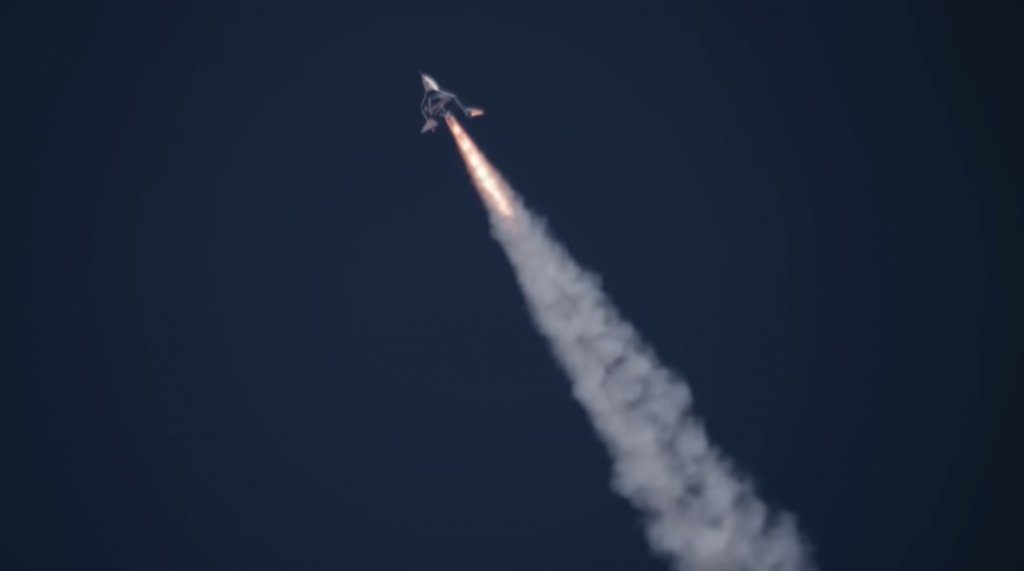At 1526 GMT on 22 May Virgin Galactic achieved its first successful suborbital crewed mission from Spaceport America, New Mexico. Following its release from the WhiteKnightTwo – VMS Eve – carrier aircraft the SpaceShipTwo vehicle – VSS Unity – completed a crewed sub-orbital flight before a safe landing back on Earth at 1543 GMT. The mission started at 1434 GMT with VMS Eve lifting-off from Spaceport America carrying the VSS Unity re-usable space vehicle.
During the mission the two pilots on-board, CJ Sturckow and Dave Mackay, reached an altitude of 89.2 km. Above the 80 km boundary that NASA uses to define the boundary of space (but not the 100 km used elsewhere). Also reportedly aboard this mission were several NASA Flight Opportunities payloads. This flight follows on from a previous attempt made in December last year when the mission was safely aborted after the SpaceShipTwo main engine shut-down shortly after ignition. Virgin Galactic worked on remedying the issue which was identified as “electromagnetic interference” generated by the flight computer system, ahead of this flight.

The SpaceShipTwo vehicle VSS Unity carrying its two pilots out of the atmosphere. Courtesy of Virgin Galactic via YouTube
Looking ahead Virgin Galactic hopes to conduct a further three test missions this year before it begins offering its planned commercial suborbital service in 2022. Reportedly after four employees fly on the next mission, the third flight this year will carry company founder Richard Branson.







